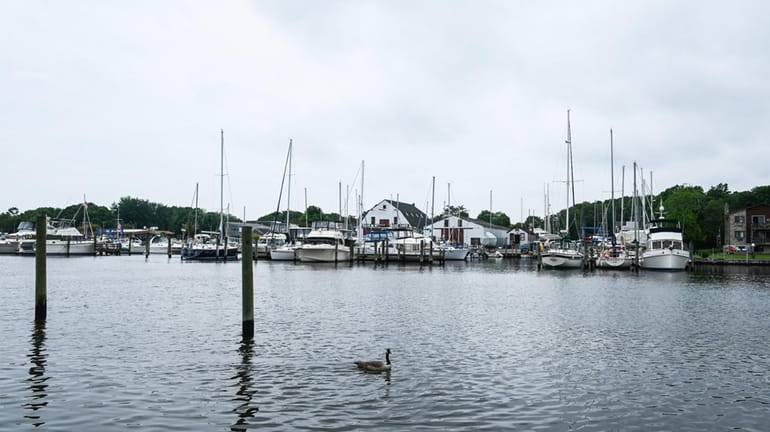Red dye to be added to Patchogue plant wastewater to see where shellfishing is safe

The Patchogue River in Patchogue in June of 2020. Credit: Newsday / Steve Pfost
State officials and the Food and Drug Administration are using a water-tracing dye to track Patchogue's wastewater in order to protect consumers of shellfish harvested in waters off Long Island's South Shore.
On March 25, wastewater from the Patchogue wastewater treatment plant will be treated over a period of 12.5 hours with low concentrations of dye, as part of a study to understand the treated effluent discharging into the Patchogue River and Patchogue Bay.
The dye used for this study, Rhodamine WT, is a water-tracing dye approved for use by the U.S. Environmental Protection Agency and will not cause environmental harm, the DEC said. Portions of the bodies of water may appear discolored and turn red or pink for a brief time and may be visible from the shores.
The fully hydrographic study is a partnership between the DEC and Drug Administration between March 24 and 30.
It will support efforts to protect the health of consumers of shellfish harvested from New York waters.
The data generated from the study will be used to assess the required shellfish closure surrounding the treatment plant outfall.
In addition, the study aims to enhance emergency readiness and the ability to respond to events related to any potential spills or untreated discharges at the wastewater treatment plant.
Adrienne Esposito, executive director for the Citizens Campaign for the Environment, said the study is needed because the Patchogue sewage treatment plant has been upgraded and has increased discharge into the Patchogue River which is now 1.2 million gallons per day.
"This study will assess the hydrodynamic flow of effluent and the contaminates it contains," Esposito said. "This is critical to understand the boundaries of concern not only for shell fishing restrictions but also fishing and recreational restrictions in case of a mishap."
The Town of Oyster Bay conducted a similar study last year.
The DEC and Oyster Bay officials, dealing with their own sewage treatment plant, dyed the harbor red to test 500-acres of water off-limits to shellfish harvesting. Officials said the study was to determine if areas declared off-limits to shellfishing, some imposed in the 1970s, should expand, shrink or remain the same.
State officials are also looking to rehabilitate Reynolds Channel along Nassau County's South Shore by rerouting 55 million gallons of treated sewage pumped daily into the Western Bays. The nearly $500 million project is redirecting treated sewage from the Bay Park sewage treatment plant in East Rockaway, 11 miles beneath Sunrise Highway to an outfall pipe in Wantagh, where it will be more diluted into the Atlantic Ocean.
DEC officials said the waters could one day be rehabilitated for shellfish production, storm protection from marshes and reef restoration and other commercial fishing and recreation.
